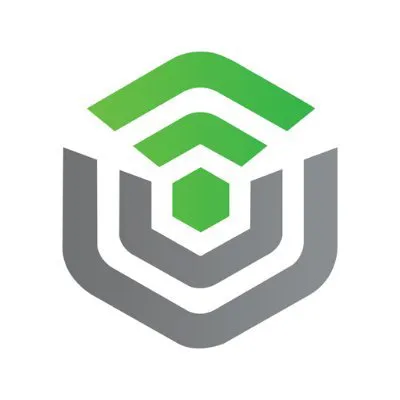Polkadot Depin Projects
Polkadot DePIN (Decentralized Physical Infrastructure Networks) projects combine blockchain with real-world infrastructure, enabling decentralized networks for assets like telecommunications, energy, and transportation. Built on Polkadot’s interoperable and scalable platform, these projects enhance efficiency, transparency, and accessibility while fostering innovation in managing and monetizing physical infrastructure.
Polkadot DePin Projects
Polkadot DePin Videos
Why are so many DePINs moving to peaq? - TOKEN2049
Crust Network with Ludwig Trappe - The Kusamarian
blast off with Ludwig Trappe, BD for Crust Network -- The Polkadot-secured storage network used crypto-wide.
Polkadot DePIN Projects: 2025 Guide to IoT, Storage, Compute, and Energy
A introduction guide to the top Polkadot DePIN projects.
DePIN turns real-world infrastructure into programmable networks: phones, sensors, robots, storage nodes, and energy assets. On Polkadot, you can compose specialized chains under shared security and move data and value with native cross-chain messaging. In 2024–2025, storage and data layers matured: Crust became a steady choice for IPFS-backed persistence, CESS pushed toward storage plus decentralized delivery, Avail gave rollups robust data availability, and Midnight advanced selective disclosure and privacy-preserving execution. Picking the right mix lowers outages and costs while improving compliance and UX.
ELI5: DePIN and the data stack
- DePIN: networks that reward real devices and hardware (phones, gateways, storage nodes, meters).
- Decentralized storage: keeps files and objects available over time (websites, media, NFT metadata, sensor archives).
- Data availability (DA): lets everyone verify that a rollup published the data it claims. DA is for verifiable publication, not file hosting.
- Data protection / privacy: prove correctness while revealing only what is necessary (selective disclosure, zero-knowledge).
Fast rule of thumb: Storage = “keep and fetch files.” DA = “prove the data exists for verification.” Privacy = “compute and verify without leaking sensitive information.”
Why Polkadot fits DePIN
- Specialized chains with shared security. DePINs can be sovereign L1s or parachains that inherit security from the relay chain.
- Native interoperability. XCM moves messages and assets between DePIN domains without fragile external bridges.
- Modularity and scale. Compute, connectivity, storage, and energy workflows can live on different chains and still feel unified to end users.
- Governance alignment. OpenGov tooling enables grants, upgrades, and program funding directly on-chain.
How DePIN works on Polkadot
-
Device onboarding and identity: Enroll devices, assign identities or machine NFTs, and register capabilities or service agreements.
-
Connectivity and data ingress: Use phone-based or gateway-based connectivity to discover devices and ingest telemetry or events.
-
Off-chain or edge compute: Schedule verifiable jobs close to the edge for pricing, inference, validation, or aggregation.
-
Durable storage and retrieval: Persist raw data and proofs to decentralized storage with content addressing for auditability.
-
Incentives and settlement: Define rewards for contributions (connectivity, compute, storage, energy flexibility) and settle payouts via smart contracts.
-
Interoperability and composition: Use XCM to pass proofs, receipts, and tokens across parachains so the end-to-end flow behaves like one product.
Project snapshots
peaq Network
What it is: A Polkadot-tech, DePIN-first L1 focused on the machine economy, aiming to host fleets of real-world apps and devices with both EVM and Wasm smart contracts. peaq emphasizes “Machine DeFi” primitives like machine NFTs and staking for device revenue. Why it matters: If your product centers on monetizing vehicles, robots, or shared devices, peaq provides purpose-built rails and is positioning as the home base for many DePINs. Good for: Mobility networks, shared hardware marketplaces, machine-RWA experiments.
Robobomics
What it is: A robotics and IoT platform operating in the Polkadot family, with practical integrations like Home Assistant and device digital twins. Why it matters: If you need deterministic control of robots and smart homes with on-chain telemetry and service marketplaces, Robonomics provides end-to-end tooling. Good for: Home automation at scale, robotics fleets, industrial IoT proofs.
Acurast
What it is: A decentralized serverless compute network that turns idle smartphones into secure compute nodes, enabling confidential AI and verifiable jobs. Why it matters: For DePINs needing verifiable off-chain compute, inference, or scheduled jobs mapped to real devices, Acurast delivers elastic capacity without centralized clouds. Good for: Edge compute, confidential workloads, AI inference networks.
Energy Web X
What it is: An energy-sector DePIN building a public Substrate chain centered on worker node networks that run energy workflows and coordinate assets, with a Polkadot integration strategy. Why it matters: If you work with utilities, grid operators, or EV infrastructure, Energy Web X aligns with enterprise-grade identity and workflow orchestration. Good for: Renewable certificates, grid flexibility, EV charging networks.
GIANT Protocol
What it is: A connectivity project that aims to tokenize bandwidth and create markets for access, with a stated plan to pursue a Polkadot path. Status and timelines are evolving. Why it matters: If you need tokenized bandwidth or telecom-adjacent staking models, GIANT is worth monitoring for cross-carrier incentives. Good for: Data plans as assets, bandwidth marketplaces, telecom loyalty integrations.
Quick landscape: devices, compute, energy, storage & data layers
Connectivity, devices, and compute
- Robonomics — robotics and smart home control with device twins and service agreements.
- Acurast — decentralized serverless compute on smartphones for confidential or verifiable jobs.
- Energy Web X — energy worker-node networks to run sector workflows with enterprise alignment.
- peaq — machine-economy L1 with machine NFTs and revenue primitives.
Storage & data layers (the focus of this merge)
- Crust Network — Polkadot parachain that incentivizes IPFS pinning and replication. Use for persistent assets, sites, and metadata with multi-gateway retrieval. Substrate L1 mentions:
- CESS — Substrate L1 for persistent storage plus a decentralized delivery layer. Consider when you need frequent reads and latency-sensitive UX.
- Avail — independent network for data availability in modular stacks and rollups; pair with storage for user-facing files.
- Midnight — data-protection chain with selective disclosure and privacy-preserving logic; not a file store.
Also mention (adjacent and complementary):
- Subspace (Autonomys Network) — archival storage and data services for modular stacks.
- Joystream — media-centric chain for decentralized video storage and distribution.
- OriginTrail NeuroWeb — decentralized knowledge graph anchoring and verification (often referencing IPFS/Filecoin).
- Frequency — social data and identity rails often paired with storage networks for content payloads.
Feature comparison
| Project | Primary domain | Chain status in Polkadot stack | Dev model | Typical hardware | Example uses |
|---|---|---|---|---|---|
| peaq | Machine economy, DePIN platform | Polkadot-tech L1 targeting DePIN | EVM + Wasm, machine NFTs | Vehicles, robots, shared devices | Monetize fleets, machine revenue sharing |
| Robonomics | Robotics and smart homes | Parachain presence | Device twins, Home Assistant | Robots, home hubs | On-chain control, telemetry, service markets |
| Acurast | Serverless compute | Integrated with Polkadot ecosystem | Jobs on phone nodes, confidential AI | Smartphones | Edge compute, verifiable jobs, AI inference |
| Crust | Decentralized storage | Polkadot parachain | IPFS incentive layer, storage APIs | Storage nodes, gateways | NFT media, sensor archives, static hosting |
| Energy Web X | Energy worker node networks | Public Substrate network | Workflows on worker nodes | Meters, EVSE, grid assets | Certificates, grid services, mobility energy |
| GIANT Protocol | Tokenized bandwidth | Building toward a Polkadot path | Telecom-style primitives | Routers, phones | Bandwidth markets, data plan assets |
Notes: Some projects operate as parachains today. Others integrate through Substrate and Polkadot tooling while parachain status or timelines evolve. Confirm mainnet details in project docs before deployment.
Common pitfalls and tips
-
Mistaking DA for storage DA validates publication for rollups. It does not host files. Pair Avail with a storage network.
-
Single-gateway dependency One gateway is a single point of failure. Add multiple gateways and support native IPFS.
-
Ignoring privacy early If you process sensitive user inputs, design for privacy from day one and push that logic to Midnight.
-
Over-optimistic roadmaps Some features roll out over time. Confirm mainnet status and SLAs before committing critical workloads.
-
Putting big files on-chain Use content addressing. Reference CIDs; don’t bloat the relay chain or parachain state with large payloads.
FAQs
-
What is the advantage of building DePIN on Polkadot vs a single L1? Specialization plus interoperability. Parachains focus on one job, then exchange messages and assets securely.
-
Can I start as a smart contract and later shift to a parachain? Yes. Many teams begin with contracts or an app-chain, then evolve toward parachain connectivity when economics or throughput justify it.
-
Can I store files on Polkadot? Store files off-chain in a decentralized storage network and reference content IDs in pallets or contracts.
-
Is Crust a Polkadot parachain? Yes. Crust runs as a parachain and provides incentives and tooling for IPFS-backed storage.
-
How do I keep assets highly available? Replicate pins, use multiple gateways, schedule renewals, and test retrieval through different paths.
-
Can I use plain IPFS without a network like Crust? Yes, but you must operate your own pinning and replication. Storage networks add incentives and operational tooling.
Conclusion
Polkadot is emerging as a practical home for DePIN that touches the real world: phones, robots, sensors, storage clusters, and power assets. Start small, compose the right parachains for the job, and make interoperability a first-class requirement from day one.





